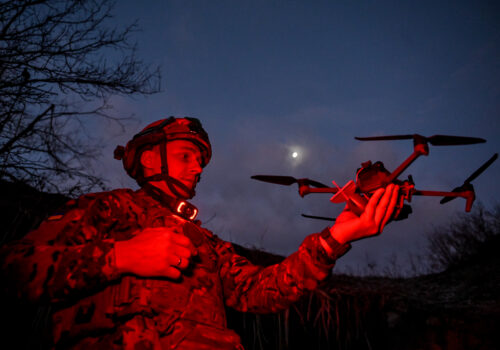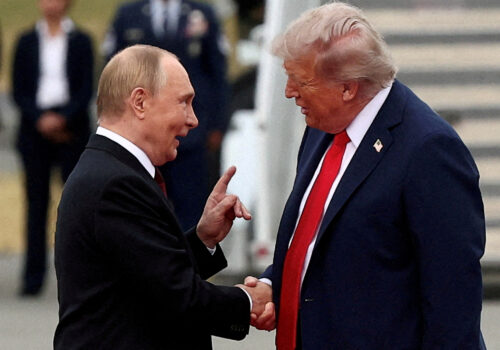How Trump can apply his Middle East success to ending Russia’s war in Ukraine
As the cease-fire his administration brokered between Israel and Hamas went into effect last week, US President Donald Trump told the Israeli Knesset that next he wanted “to get Russia done.”
The Israel-Hamas war and the Russia-Ukraine war are obviously different in many important ways. Having served as a US diplomat both in Israel and Ukraine, I know the regions where these conflicts take place have much that makes them distinct. Nonetheless, there are several important lessons from Trump’s recent triumph in the Middle East that might apply to ending the war in Europe.
What worked in the Middle East
Specifically, Trump’s engineering of a deal between Israel and Hamas was a tour de force achieved through military and diplomatic pressure. The US president utilized both brilliantly.
The military pressure came mainly from Israel but also from the United States. Israel’s full-bore assault on Gaza after the horrors of Hamas’s October 7, 2023, attack immediately put Hamas on the defensive. But as often happens when Israel responds to a Palestinian attack with major force, this led to major international pressure on Israel to ease up. The Trump administration largely—but not entirely—worked to shield Israel from that pressure, which meant that Israel kept the heat on Hamas.
Israel further strengthened its position with its ingenious operations against the leadership and soldiers of Hezbollah, dealing a near-fatal blow to Iran’s principal instrument of influence in Lebanon. US and Israeli strikes against the Houthis also weakened Iran’s surrogate in Yemen. Finally, the Israeli and US strikes against Iran’s nuclear facilities in June significantly set back its nuclear program. As a result of these operations, Israel and the United States greatly weakened Iran, Hamas’s major sponsor and principal source of arms.
But that was not Hamas’s only problem. Trump’s diplomacy applied additional pressure on the group. He leveraged the close relationships he has cultivated with Qatar, Turkey, and Egypt to push Hamas to accept his terms for peace, something they were more willing to do because Trump’s twenty-point peace proposal left open the prospect of an independent Palestinian state. Trump also applied diplomatic pressure on Israeli Prime Minister Benjamin Netanyahu to accept the terms, despite the plan’s deep unpopularity with the far-right members of his coalition.
What’s needed in Europe
The Trump administration has devoted at least as much effort to achieving a durable peace in Ukraine as it has to ending the conflict in Gaza, but the results thus far have been inconclusive. The principal difference between the administration’s approach to the two wars is this: In the Middle East, the White House energetically followed its overarching principle of peace through strength. In Europe, the administration has applied this principle inconsistently.
By the end of April, Russian President Vladimir Putin’s deflection of numerous Trump cease-fire proposals—proposals that Ukrainian President Volodymyr Zelenskyy accepted—made clear that the Kremlin was the obstacle to peace. From that point forward, the Trump administration began to talk about sending advanced weapons to Ukraine, which European countries would pay for, and about putting major tariffs and restrictive economic measures on Russia and its trading partners.
On three occasions, the White House appeared to be on the verge of ramping up pressure on Moscow. In May, Trump threatened to join European leaders in placing additional sanctions on Russia if it did not implement an immediate cease-fire. Later in the summer, Trump set a deadline for restrictive measures and advanced weapons supplies if Russia did not stop shooting by August 8. And this month, Trump spoke publicly about the possibility of providing Ukraine with Tomahawk cruise missiles—which have the ability to travel 1,500 miles and accurately deliver a heavy payload—to make clear to Putin that the Russian leader’s goal of conquering Ukraine is futile.
On the first two occasions, Trump let the moment pass without providing Ukraine major new weapons systems or putting in place heavy restrictive measures against the Russian economy (with the exception of pressing India to reduce Russian oil purchases). In his October 17 meeting with Zelenskyy, Trump made it clear that he was not ready to offer Ukraine Tomahawks, and he was counting on an upcoming meeting with Putin in Hungary to establish a cease-fire.
Notably, each of Trump’s decisions not to increase pressure on Russia followed a suggestion by Putin to restart negotiations on a peace agreement. Equally notable is what followed. In May, once the United States decided not to add new sanctions against Russia, Putin lost interest in meeting with Zelenskyy to talk peace. In August, when meeting with Trump in Alaska, Putin offered no flexibility—and no progress was made toward an actual end to the fighting.
This is no surprise because Putin does not want to end the war. He wants effective political control of Ukraine, which requires his military to take far more Ukrainian land.
So, what can the White House do? The United States, working with its partners in Europe and elsewhere, has the power to put substantial pressure on Russia’s faltering economy. The United States also has the weapons that would make it far more difficult for Russia to conquer more Ukrainian land or to prolong the war. Some advisers to Trump follow the lead of their Biden administration predecessors and say that since Russia is a nuclear-weapons power, the United States should not dare give Ukraine advanced weapons. They seem to believe that even Tomahawks, which are based on technology from the last century, would “escalate” the conflict. The fact is that Russia has escalated the conflict on numerous occasions, including when it chose to use ballistic missiles, which are far more dangerous than Tomahawks. This form of self-deterrence by the United States is not peace through strength. It only persuades Putin that he can have his way.
Trump seems to understand this. He told the press this past Friday that perhaps Putin is “playing him” for time, but that others had played him before and he still came out on top. He also mentioned at the Sharm el Sheikh summit—held to formalize the Hamas-Israel agreement—that there would have been no agreement had he not bombed Iran. This suggests that he may be biding his time before applying the screws to the Kremlin. It is not clear, however, why he sees a need to wait.
John E. Herbst is the senior director of the Atlantic Council’s Eurasia Center and a former US ambassador to Ukraine. He also served as a US consul general in Jerusalem and in other roles at the US Embassy in Tel Aviv.
Further reading
Wed, Oct 15, 2025
Twenty questions (and expert answers) about the next phase of an Israel-Hamas deal
New Atlanticist By
What will follow part one of the cease-fire deal brokered by the Trump administration? Atlantic Council experts share their answers.
Fri, Oct 10, 2025
Dispatch from Ukraine: The path to a durable peace is emerging
Inflection Points By Frederick Kempe
A recent trip to Kyiv reinforced that, as momentum shifts in Ukraine’s favor, a just and durable peace could be within reach.
Tue, Oct 14, 2025
Tomahawk missiles are Russia’s latest red line. Will Trump call Putin’s bluff?
UkraineAlert By Peter Dickinson
Time and again since 2022, Moscow has declared a new red line while warning of the West of nuclear escalation, only to then do nothing when their red lines are crossed. Trump can now call Putin's bluff over Russia's latest red line by providing Ukraine with Tomahawks, writes Peter Dickinson.
Image: United States President Donald J Trump greets President Volodymyr Zelenskyy of Ukraine at the West Wing Lobby entrance of the White House in Washington, DC, USA, on Friday, October 17, 2025. IMAGO/MediaPunch via Reuters Connect



